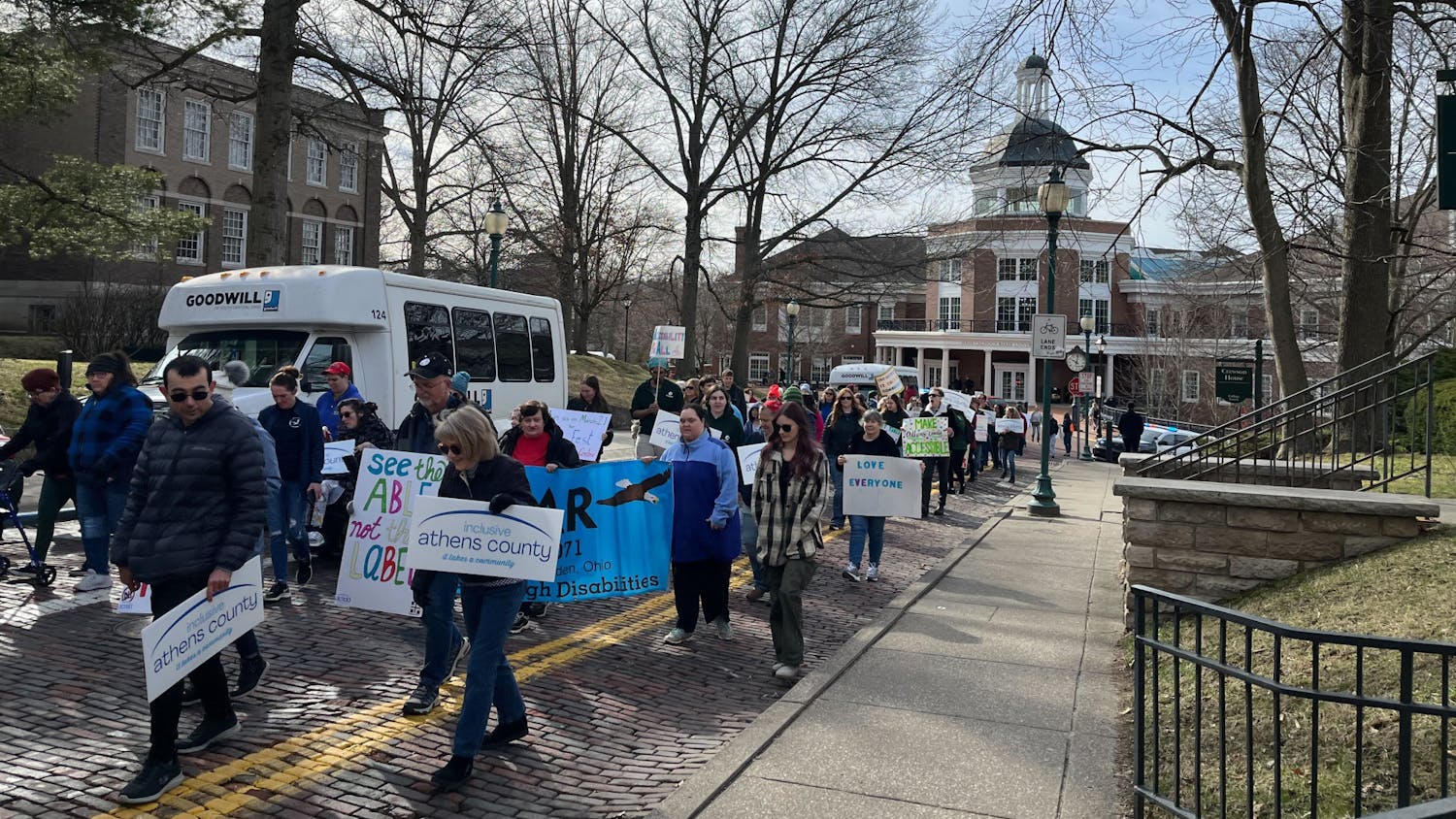Ohio University’s 21st President Duane Nellis will begin his first official day in office in the same manner as the thousands of first-year students who walk through the doors on orientation day — receiving his university ID card before shaking hands with OU’s costumed mascot, Rufus.
Nellis will spend a large part of his Monday morning with students and faculty, attending breakfast with Athens community leaders, executive staff and deans in Cutler Hall, before visiting with students in the GRID Lab.
The presidential transition has been long-awaited, ever since former OU President Roderick McDavis announced he would be stepping down from his position in March 2016, prompting a national search process that spanned nearly a year.
McDavis, who served as the university’s 20th president since 2004, was not only the second alumnus to take on the role, but also the first black president. In February, he started down a new career path as the managing principal of AGB Search, a search firm based in Washington, D.C., that specializes in higher-education leadership.
The OU Board of Trustees selected 21 individuals for a presidential search committee, which was made up of six members of the Board of Trustees, three students, six faculty members, five deans and one representative from the Athens community. The committee worked in collaboration with executive search firm Witt/Kieffer, which received $148,656 — about $1,344 less than the sum agreed to in the contract — for its services.
Nellis found himself to be the final candidate in the presidential search after three of the four finalists withdrew from the search within a single week. He will succeed interim President David Descutner, a 35-year OU faculty member, who has played a part in facilitating the presidential transition since Feb. 18.
The former president of Texas Tech University, Nellis resigned from his position in early 2016, stepping down into a tenured faculty role after falling short in the presidential search for the University of Wyoming. An article in The Texas Tribune described his “frustration with the governance structure at Texas Tech,” including tensions with chancellor Robert Duncan, whom he cited as having a “political background.”
Following his resignation, Nellis was replaced by Lawrence Schovanec, who served as the university’s interim president in the year before Nellis was appointed. According to comments published in The Daily Toreador, Texas Tech’s student-run newspaper, Duncan praised Nellis for his effort to make the university a “Spanish serving institution,” in addition to “significant” strides made in advancing the strategic plan.
Nellis spoke at length about issues of transparency and diversity during an on-campus public forum in February, which was largely attended by administrators and faculty members. He declined to speak with media following the event.
“One of the things that will define the success of a major, distinguished public university is a commitment to diversity and inclusion and how well you do that,” Nellis told the audience during the forum, highlighting his experience with the rapidly-growing Hispanic student population at Texas Tech.
Earlier in his career, Nellis served as the president of the University of Idaho from 2009 to 2013 and spent about 22 years at Kansas State University in a number of administrative and teaching roles in the department of geography.
When Nellis was appointed as president of Texas Tech in 2013, he earned a base salary of $427,000 per year — an amount which increased to $444,251 by the year of his resignation. During his first year at OU, he is projected to net a salary of $475,000, in addition to the funds deposited in his university-appointed deferred compensation account. According to a previous Post report, after leaving office to pursue a new career, McDavis received more than $1 million in deferred compensation.
Nellis and his wife, Ruthie, will not be living at 29 Park Place — the former presidential residence vacated in 2015 by McDavis and his wife, Deborah, after a bat infestation caused Deborah to slip and break her foot. Then-Board of Trustees Chair Sandra Anderson said in a 2016 meeting that the residence would no longer be used to house presidents.
Instead, Nellis has been granted a stipend of $5,000 per month to live in a home of their choosing. University Spokeswoman Carly Leatherwood said the president has purchased a home “in the Athens community” and will have moved in by the first day of his presidency.
The move to Athens marks a return to Appalachia for the presidential couple, who lived in the region while Nellis served as dean of West Virginia University from 1997 to 2004. Their two children, Jonathan and Jason, both reside in the Pittsburgh area, only about three hours away from OU.
A native of the Northwest, Nellis was born in Spokane, Washington, and attended Montana State University, where he not only received his bachelor’s degree in earth sciences and geography, but also met and married his wife. He later went on to complete his master’s and doctoral degrees in geography at Oregon State University.
As his first day drew near, Nellis took the opportunity to introduce himself in a university-wide email, writing of his excitement to become “an official member of the Bobcat family.”
“I take great delight in hearing about the successes at all corners of our University community: the fantastic research, the commitment to public service, and the incredible things that we do to change the world,” Nellis wrote. “You all give me so many reasons to be proud to be your next president.”






